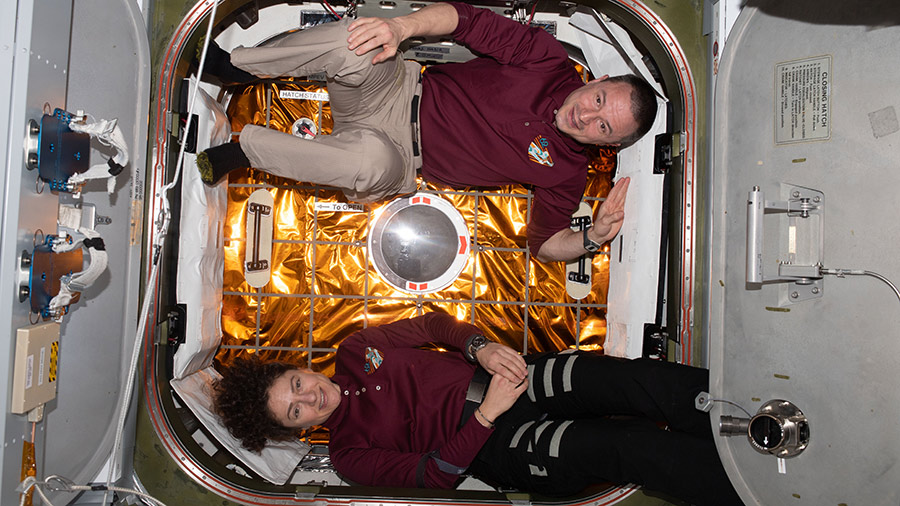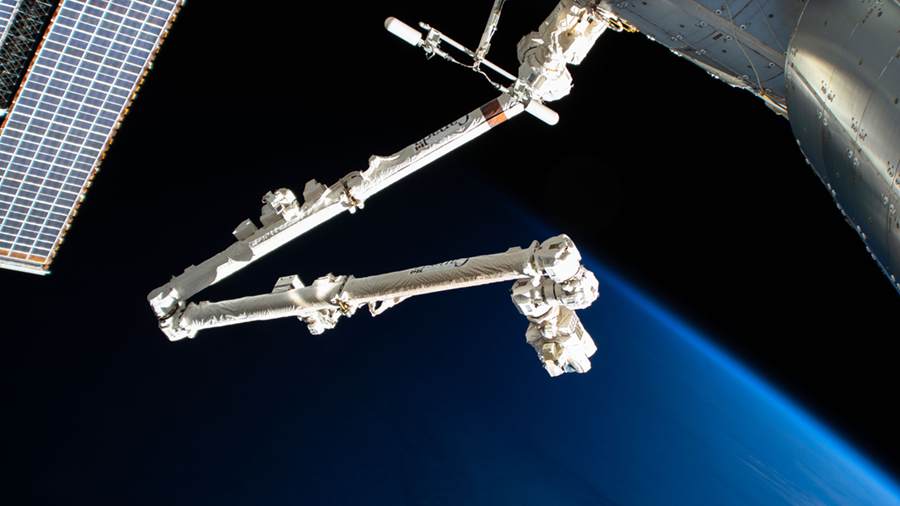Space Botany, Biology During Robotics and Spaceship Work

A U.S. cargo craft is just one week away from departing the International Space Station and returning to Earth packed with science and hardware for analysis. Meanwhile, the Expedition 62 crew is continuing its space biology research as robotics controllers begin installing the new Bartolomeo science platform.
NASA Flight Engineers Andrew Morgan and Jessica Meir will be packing the SpaceX Dragon cargo craft the rest of the week before its departure on April 6. The duo will be loading Dragon with experiments and station gear such as spacesuit components for analysis by scientists and engineers on Earth.
Ground controllers will remotely command the Canadarm2 robotic arm to release Dragon back into Earth orbit next Monday at 9:52 a.m. EDT. Morgan will be in the cupola monitoring the release activities with NASA TV beginning its live coverage at 9:30 a.m.
Dragon’s final splashdown in the Pacific Ocean a few hours later will not be broadcast on NASA TV. Future Dragon cargo missions will splashdown in the Atlantic Ocean.
Morgan spent the morning on plant and mice research. He first added water to the Veggie PONDS device that delivers nutrients to lettuce and mizuna greens being grown and harvested aboard the station. Next, he fed rodents being observed for changes to their genetic expression due to living in microgravity.
Both Morgan and Meir started Monday collecting and stowing their blood samples. The duo also had their periodic health check measuring each other’s temperature, blood pressure, pulse and respiratory rate.
Meir then moved on to the Vascular Echo study to understand the arterial stiffness and cardiac changes that occur while living in space. She took several blood pressure measurements for the long-running study that could improve cardiovascular health on Earth and in space.
Bartolomeo, the external science payload device from the European Space Agency, is ready for installation after being removed from Dragon’s trunk last week. Robotics controllers will begin the two-day job to attach it to the Columbus module on Tuesday where it will host experiments exposed to harsh environment of space.
Commander Oleg Skripochka of Roscosmos is packing the Soyuz MS-15 crew ship that will return him, Meir, and Morgan back to Earth on April 17. They will welcome a new crew on April 9, when Chris Cassidy of NASA lifts off with Roscosmos cosmonauts Anatoly Ivanishin and Ivan Vagner on the Soyuz MS-16 crew ship. They will dock to their new home in space just six hours after launching from Baikonur Cosmodrome in Kazakhstan.
Mark Garcia
Powered by WPeMatico







